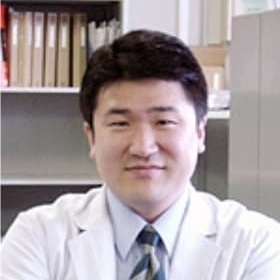Gene-therapeutic Strategies in Cardiovascular Disease
A special issue of Medicines (ISSN 2305-6320). This special issue belongs to the section "Cardiology and Vascular Disease".
Deadline for manuscript submissions: closed (31 March 2018) | Viewed by 10600
Special Issue Editor
Interests: periostin regulates inflammatory disease; hypertension; gene therapy; periostin & cancer
Special Issues, Collections and Topics in MDPI journals
Special Issue Information
Dear Colleagues,
Cardiovasucular diseases remain a large health problem. Gene therapy is a potential treatment of inherited and acquired cardivascular diseases with unmet medical needs. Initially, angiogenic gene therapy was performed for ischemic disease, but almost clinical trials at phase III failed. Only hepatocye growth factor (HGF) gene therapy, for peripheral artery disease, successfully showed a prefarable effect in phase III clinical trials; however, the results were not good enough. Fibroblast growth factor (FGF)-2 with Sendai virus is also going on; though we need to wait for the results of large clinical trials. Second, gene therapy for heart failure, to enhance myocardial contractile force, is being performed. There are some candidates, such as sarcoplasmic endoplasmic reticulum Ca (CERCA2a), adenylyl cyclase 6 (AC6), stromal cell-derived factor-1 (SDF-1), or β-adrenergic receptor kinase, and phase I and II clinical trials, at least, show the safety of gene therapy. Third, direct reprograming by several gene transfers produces myocytes from cardiac fibroblasts in animal models. Myocardial regeneration by gene transfer may be a promising modality for clinical heart failure. In addition, the development of virus vectors is progressing rapidly, and vaccine using gene transfer may be acceptable for heart failure.
In this Special Issue, we want to integrate recent advances in gene therapy for cardiovascular disease.
Assoc. Prof. Dr. Yoshiaki Taniyama
Guest Editor
Manuscript Submission Information
Manuscripts should be submitted online at www.mdpi.com by registering and logging in to this website. Once you are registered, click here to go to the submission form. Manuscripts can be submitted until the deadline. All submissions that pass pre-check are peer-reviewed. Accepted papers will be published continuously in the journal (as soon as accepted) and will be listed together on the special issue website. Research articles, review articles as well as short communications are invited. For planned papers, a title and short abstract (about 100 words) can be sent to the Editorial Office for announcement on this website.
Submitted manuscripts should not have been published previously, nor be under consideration for publication elsewhere (except conference proceedings papers). All manuscripts are thoroughly refereed through a single-blind peer-review process. A guide for authors and other relevant information for submission of manuscripts is available on the Instructions for Authors page. Medicines is an international peer-reviewed open access monthly journal published by MDPI.
Please visit the Instructions for Authors page before submitting a manuscript. The Article Processing Charge (APC) for publication in this open access journal is 1400 CHF (Swiss Francs). Submitted papers should be well formatted and use good English. Authors may use MDPI's English editing service prior to publication or during author revisions.
Keywords
-
heart failure
-
angiogenesis
-
gene therapy
-
vaccine
-
drug delivery
-
myocyte regeneration
-
virus vector development




